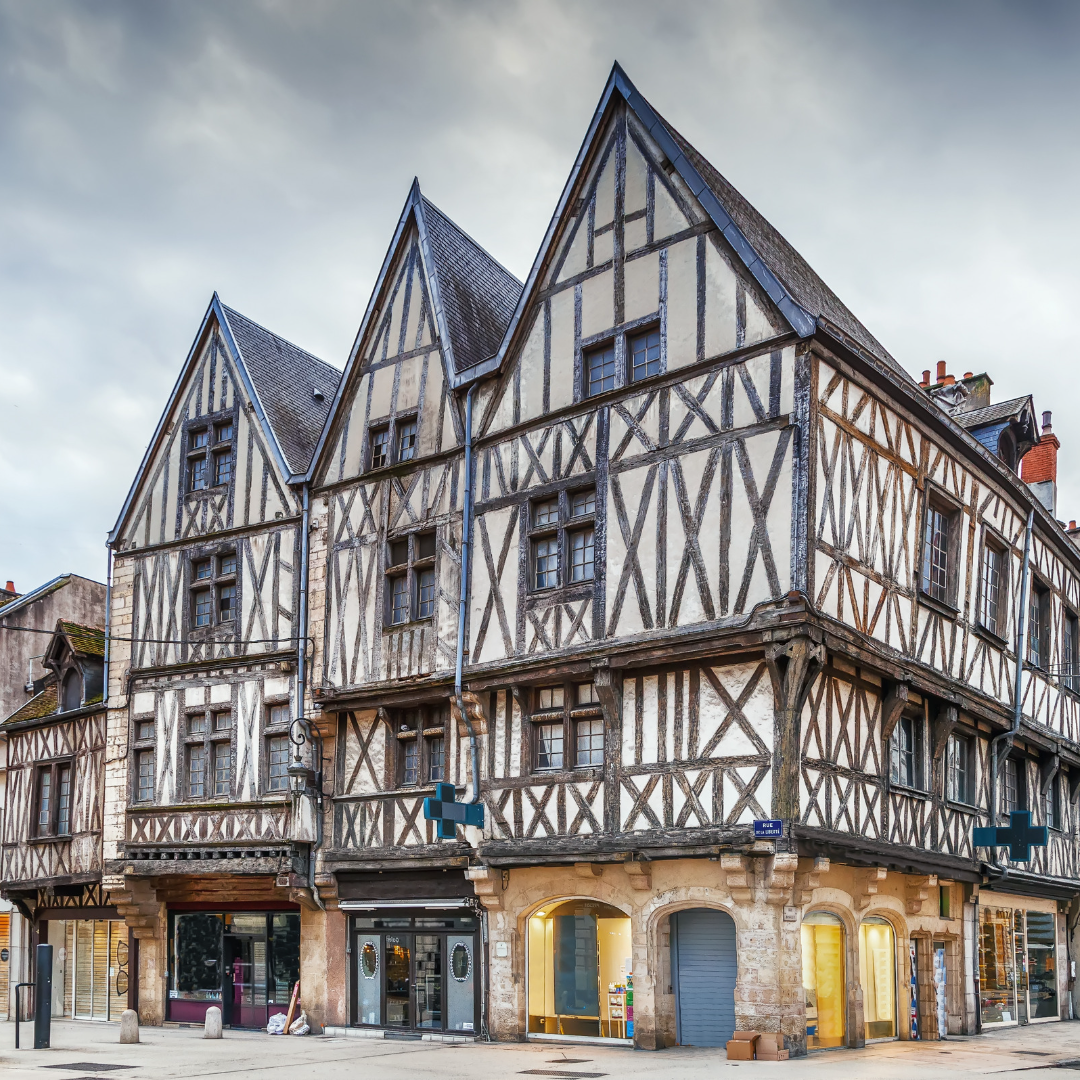A Delicious Introduction to Bubbles & Burgundian Wine
Tour two of the most renowned wine regions in France–Champagne and Burgundy–on a magical wine and food adventure! In between sipping flutes of Champagne and the most sought-after Burgundian wines, soak up the culture, stunning Gothic architecture, picturesque countryside and world-class cuisine tucked away in this corner of northeastern France.
Champagne, Shining Bright
Known as the birthplace of the world’s most romantic, effervescent beverage, the Province of Champagne offers an impressive list of “sites to see” beyond the notable Champagne Houses. Two very special cities in Champagne—Reims and Épernay–are not to be missed.

Reims
Quite simply, this university town bubbles with a rich history, fine food and drink just waiting to be discovered! Reims has many famous landmarks, and the Cathédrale Notre-Dame de Reims, where 33 kings of France were crowned, is at the top of the list. A masterpiece of Gothic architecture, dramatic open space and stained glass windows, it is touted as one of the most beautiful cathedrals in France and definitely worth the stop. (Fun fact: Joan of Arc attended Mass here). Reims is also home to a number of museums, one being the Musee des Beaux Arts, where Impressionist paintings by Renoir and Monet are on display. The Museum of the Surrender provides an intimate look at the history of World War II and is the actual location where the Germans surrendered in World War II.
Touring this lovely city and all its historical sites is hard work, and should be balanced with visits to the well-known Champagne Houses (think Veuve Clicquot, Champagne Taittinger and Champagne Pommery). Enjoy flutes of the finest sparkling wines and learn the story of how Champagne came to be. And the full Champagne experience is not complete unless a light and crunchy Biscuit Rose de Reims has been properly nibbled (and dunked!) in a glass of wine.
A quick technical note: All Champagne is sparkling wine, but not all sparkling wine can be called Champagne. To clarify, for a sparkling wine to bear the name Champagne, it must come from the Region of Champagne and be made according to a strict (and regulated) set of laws that govern the entire production process from vineyard to glass.
Épernay
Smaller than its sister city of Reims, Épernay quietly holds its own when it comes to Champagne. Just as Rodeo Drive in Beverly Hills is known for designer labels and haute couture fashion, Épernay’s Avenue de Champagne claims the world’s most prestigious Champagne Houses situated in stately mansions (think Moët & Chandon, Pol Roger and Perrier-Jouët, to name just a few). But even more impressive than the picturesque mansions and boutiques are the underground chalk caves and cellars, home to millions of bottles of Champagne, that lie below the Avenue. At the western end of the Avenue is another historical treasure, the Town Hall and Gardens. Once a private mansion owned by Mr. Aban-Moët, this estate is surrounded by beautiful, expansive gardens and a pond perfect for wandering.
A trip to truly Champagne gifts an appreciation of the history, art and time that goes into the production of French sparkling wines. A process that is truly a labor of love.
Sip, Savor and Marvel Across Burgundy (or Bourgogne in French)
Nestled in a landscape of rolling hills and vineyards are the Burgundian towns of Dijon and Beaune just waiting to be discovered….

Dijon
The capital city of Burgundy, Dijon is a mecca for culture, sightseeing and gastronomy. One of the most unique things to do in Dijon is to follow the Owl Trail! Just like the yellow brick road led Dorothy to the Wizard of Oz, a path of bronze arrows marked with a tiny owl lead to 22 of the town’s best attractions–palaces, markets, cathedrals, museums and gardens. (Bonus: walking the Owl Trail also offers a look at the mesmerizing Medieval and Renaissance architecture tucked among the ancient streets). And let’s not forget the amazing foods that originated in Dijon–coq au vin, the fruit liqueur known as Creme de Cassis, snails and of course, mustard. All of these are ingredients readily available in markets and restaurants and are best enjoyed with a glass of Pinot Noir or Chardonnay! Dijon is heaven on earth for foodies.

Beaune
Known as the “best wine town” in Burgundy, Beaune is a feast for the eyes and stomach. But before gallivanting across the French countryside in search of food and drink, a visit to the
Hospices de Beaune is in order to feed the soul. Referred to as the “Palace for the Poor,” this vast compound was established in 1443 as a hospital and home to care for the sick. Vineyards were later planted around the estate. Today, the original hospital building is a museum. The surrounding vineyards continue to thrive and produce fine wines that are sold at auction. The sale, organized by Sotheby’s each November, is the most famous wine auction in the world. Proceeds from these sales go towards the preservation of this historic site.
Biking the Way of the Vines (Voie des Vignes) is an authentic way to experience the French countryside. A fairytale-like landscape, dotted with mustard fields and vineyards, is home to medieval villages with big names, like Pommard and Meursault. This is12 where velvety Pinot Noirs and bright Chardonnays are produced. But be sure to visit one of the local farmers’ markets to stock up on artisan cheeses, meats, seasonal fruits and bread before embarking on a cycling adventure through the vineyards. As wine tasting and picnicking at chateaus along the Trail are highly encouraged, these provisions will come in handy!
Ready to discover these wine regions? Join us on one of our latest trips!

